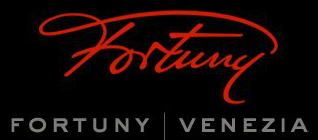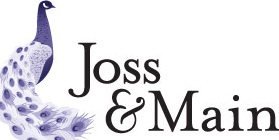The Metropolitan Opera: Behind the Scenes
These Sconces, custom designed for the The Metropolitan Opera House in 1966, are now for $ale. Several styles are available, each designed for different seating levels on the various floors. Currently illuminating the walls throughout, these were recently discovered as overstock + available for purchase. They just look like earrings here, but actually measure a generous 15.5 inches tall x 6.75 inches wide. They are stunning + worth owning as a spectacular moderne piece of history. 6K each, ouch. But if you got it.....flaunt it!
I was privileged to take a behind-the-scenes tour of this famous institution.
Some highlights of the tour I found fascinating:
Curtains: There are 2 types: 1- "The Guillotine", falls down fast from the top 2- "The Wagner", which closes in toward the center, from both sides The production designer decides which one to use, for best effect .
Acoustics: No microphones are used at the Met which differs from Broadway productions. Unbelievable! That's why there is no carpeting in the main Auditorium, no hard edges in the decor + seats that are not particularly plush with foam fill. This is intended to enhance the acoustics. Interestingly, a Ballet Theater is designed with opposite goals – to dampening the sound of the dancer's feet.
Child Performers: There is a Children's Chorus, which any child can audition for. The one song required is "Happy Birthday" because it has a wide range of high + low notes.
Animals: There are elevators + ramps to walk the animals on stage for certain productions. Horses don't like ramps! Each animal has 2 handlers, dressed in costume, to make sure they behave.
Sets: Opera Houses throughout the world have begun to share sets. It's more cost effective to send + re-use scenery, than to create + store all the props for each production. Scaled models of the sets can be found on display + are used to see if the sets will fit the dimensions of different venues. However acoustics differ greatly. Some singers can't perform in every venue -their voices just don't carry.
Crates: The wooden crates that line the hallways have many different Opera's names on them. The resources of shoes and props are shared by different productions.
Sub-Titles: There is always a musician + a technician in the subtitle room, located to the rear of the auditorium. This is to keep the lines of type in front of each audience member, on track, in case there is a departure in the live performance.
Monitors: On each side of the stage is a hidden TV monitor, which allow the performers to see the conductor, who is hidden from view in the Orchestra pit.
Here are some of the Specialty Rooms I got a glimpse of:
Costume Shop Zippers are not commonly used. The costumes either snap or button closed, which makes them easier to alter + quicker to change. Plastic bins line shelves throughout the hallways with bits + pieces of fabrics.
There were labeled: Yarn, Military Items, Metallic, Rustic Rope, Jute, Lace, Buttons, Grommets, Fur Scraps, Embroidered Linens, Sword Belts, Knee Pads, Gloves, Socks, Scarves, Veils, Sashes, Shawls of all type (Feather, Jewish, Yellow, Red, Spanish, etc.) I spotted a shoe box from Peter Fox Shoes- remember them?
Wig Shop Natural hair is used for all the wigs. They use a "wig broker" to supply the hair. Each singer has their own wigs - no sharing allowed.
In between scenes the wigs gets freshened-up, while the performer relax in their dressing room. I have never seen so many different types of bobby pins. Many were very long, in every brown color you could image. I spotted Rave Hair Spray 4x Extra Hold, plus the usually assortment of Paul Mitchell etc.
Prop Shop Props have to be realistic looking but light in weight. Many are made from foam, latex or plastic. They have to be be easy to move around for the crew + singers.
Paint Shop Interesting to find costumes in here. It’s not to match the paint of the the sets to the fabric of the costume as you might assume, but rather to "distress" the fabrics of the costumes to look blood stained or ripped.
For the Performers:
Dialect Coaching Rooms: To learn how to talk + sing, with an accent!
Singers Rehearsal Room: Filled with humidity because Singers need to hydrate their vocal cords.
Dancers Rehearsal Room: With a bar, mirrors + space to stretch-out. Big sign that says, "No Orchestra Members Allowed". I think it's because the flooring is special in there, for dance shoes.
Orchestral Rehearsal Room: As you would expect.
Of course there are separate Female + Male Dressing Rooms, as well, for the Singers, Dancers + Musicians.
An army of the most talented dedicated performers + crew go into creating each performance as a collaborative work of art.
Kudos to them all!
Be a part of the thrill:
Attending the Opera is affordable. There are nose bleed seats available for $30 a ticket. Commonly known as "Family Circle" tickets. Bring binoculars but don't let that stop you from supporting this glorious art form.
If you want to expand your appreciation for Opera + don't live in NYC, try the wonderful high definition live transmissions via satellite, the Met now offers.
12 performances this year alone. TV cameras shoot the action live from the stage + it's shown directly on the screen of your local movie theaters.
It's awesome + honestly gives you the best seat in the house: up close + personal. The Intermission(s) are my favorite part as it shows the action behind the curtain - the sets being changed. The live audience members aren't privy to these views! It's so cool to see the performers at times, out of character. This stuff is just priceless.
Tickets are $25.
Yep, trying to save for the sconces.
Culture Up! (my new motto)
 Fabric,
Fabric,  Lighting,
Lighting,  Metropolitan Opera,
Metropolitan Opera,  NYC
NYC 



























Reader Comments